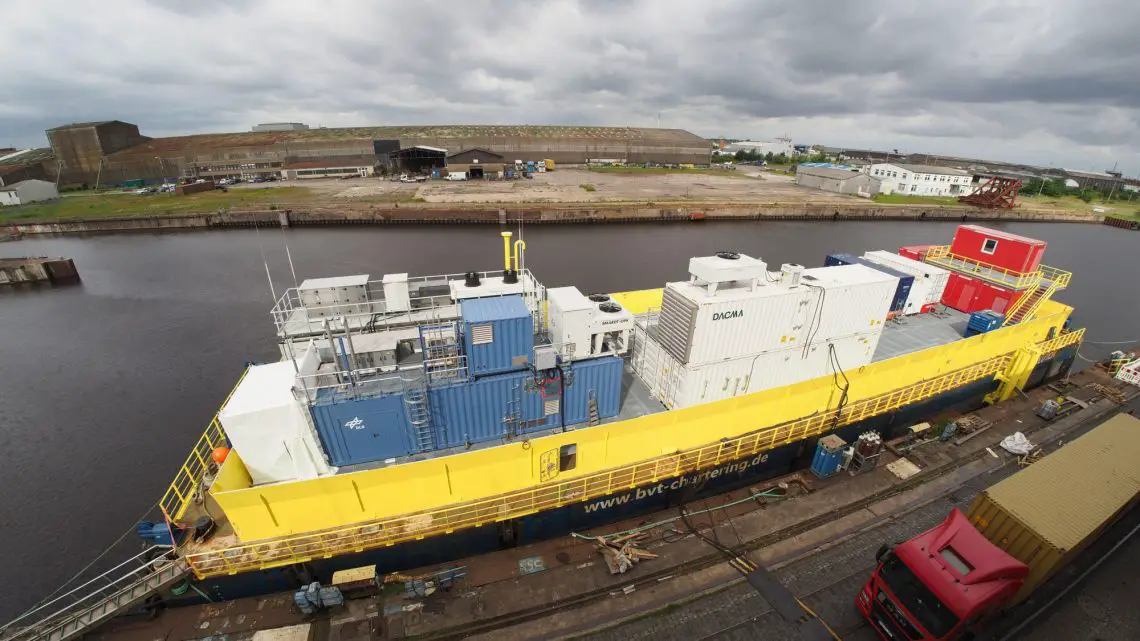
World’s First Floating Green Hydrogen Plant Sets Sail in the North Sea
July 29, 2025A Hydrogen Flagship That Floats
It’s not every day that a shipyard launches something that isn’t, well… a ship. But on July 8, 2025, Germany took a bold step toward a cleaner future when PtX-Wind set off from Bremerhaven and headed for open waters near Helgoland. This isn’t your typical vessel. It’s the world’s first grid-independent, offshore synthetic fuel platform—a floating powerhouse pushing the boundaries of hydrogen production and Power-to-X (PtX) technology.
Imagine a giant, high-tech chemistry lab bobbing in the sea. That’s PtX-Wind. Fueled entirely by offshore wind energy, it turns seawater and air into synthetic fuel—all without a single connection to the power grid or a drop of fossil fuel. It’s a self-running system, designed by the Karlsruhe Institute of Technology (KIT) with support from the German Aerospace Center (DLR) and Technische Universität Berlin (TU Berlin).
So What’s on Board?
This floating lab is packed with cutting-edge gear that works together like a clean-tech dream team:
- High-Temperature Electrolysis that cracks desalinated seawater into hydrogen and oxygen—more efficiently than traditional methods.
- Direct Air Capture (DAC) units that suck CO2 straight from the ocean breeze.
- Fischer-Tropsch Synthesis that combines that hydrogen and CO2 into drop-in-ready synthetic fuels.
- Seawater Desalination to keep those electrolyzers humming smoothly.
All of it runs on the ocean’s natural resources—wind, water, and air. No wires. No pipelines. Just energy on the move.
Why Take This Offshore?
Because offshore wind packs a punch. It’s stronger, more consistent, and avoids the headache—and cost—of building long-distance transmission lines. But there’s more to it. Germany’s pushing hard to slash fossil fuel imports and hit its environmental goals, and offshore green hydrogen is front and center in that plan.
This project is part of the broader H2Mare initiative, backed by the German Federal Ministry of Research, Technology and Space. The goal? Show how we can merge sectors—electricity, heat, transport fuels—right where the power is being generated: at sea.
What Makes PtX-Wind a World First?
Individually, these technologies have existed. But combining them all into one fully self-contained platform offshore? That’s a first. PtX-Wind isn’t just making green hydrogen—it’s producing fully usable synthetic fuels in the middle of the ocean without needing connections to land-based infrastructure.
For the project team, this is a real-life experiment in everything from how materials handle salty air and stormy seas, to how current regulations will need to evolve, to whether this model can scale to industrial levels.
From Bremerhaven to the Big Picture
Bremerhaven has long been a hub for wind energy and maritime innovation. Now, it’s stepping up as a launching pad for clean fuel. With PtX-Wind moving from dockside testing to real-world ocean trials near Helgoland, the team’s now gathering critical data on efficiency, durability, and actual fuel output.
The ripple effects could be huge. Germany moves closer to reaching net-zero emissions. The shipping industry explores cleaner ways to move goods. And Europe starts sketching out what an energy-independent future could look like—one floating platform at a time.
Why This Matters—Economically and Environmentally
This isn’t just about one floating lab. It’s about what it could inspire. If successful, platforms like PtX-Wind could:
- Help decarbonize shipping, aviation, and heavy industry by supplying clean, scalable synthetic fuels.
- Reduce fossil fuel dependence and boost Europe’s energy resilience.
- Create new jobs in offshore engineering, fuel tech, and maritime operations.
Of course, there are challenges. Think potential disruption to marine life, corrosion issues, and keeping these complex systems running in tough ocean conditions. But the team’s tackling those head-on, baking in life cycle assessments, safety planning, and public engagement from day one. That’s how you build not just tech—but trust.
What’s Next?
With €38.3 million in funding and support from 18 partners across academia and industry, PtX-Wind isn’t some science fair concept—it’s a real investment in the future of green hydrogen, clean ammonia, and offshore Power-to-X systems.
While countries are still debating how to power their futures, Germany is already out in the water, testing a bold new answer to a different question—what if energy didn’t need land at all?



 With over 15 years of reporting hydrogen news, we are your premier source for the latest updates and insights in hydrogen and renewable energy.
With over 15 years of reporting hydrogen news, we are your premier source for the latest updates and insights in hydrogen and renewable energy.